Diving In
Some of the best freeskiers and cliff divers are making a splash in Vermont’s timeless swimming holes.
Before I jumped, I could taste the flowing water in the air. It smelled like earth—like moss and snowmelt, running clean and clear from a dark, cool place somewhere up the mountain. I gripped the rough edge of the rock with my toes, imagining what it would feel like to plunge into the water below. I shifted my weight and, after hesitating twice, I launched out and over the smooth, glacially-carved rock and into the pothole below.
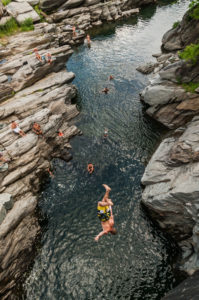
For anyone who grew up in Vermont, diving into the local swimming hole is a summer ritual. On a hot summer day, Vermont’s mountain pools become gathering spots, places where everyone comes together to take refuge from the heat and where diving in is a spectator sport.
Year after year, people go back to their favorites, plunging into the crystal-clear depths of glacially-carved holes. Some, like Bolton Potholes, are worn round and smooth by the streams and rivers that feed them, the water still ice-cold from snowmelt that trickled off the mountain above.
Each jump, for me, brings an element of fear, surprise and then refreshing clarity. Others seem to launch off the higher rocks with no hesitation, effortlessly contorting into flips and tricks before hitting the water below.
Noah Labow, coach at the Green Mountain Academy, is one of those.
“When I think of my favorite Vermont swimming hole, I think of Bingham Falls,” says Labow. “It’s a prehistoric kind of place, with roots hanging down over the rocks and cavernous pools. You enter from above, and when you do, you can feel the air cool as you get down to the springs, even on a 90-degree day. You can feel the vibration of the falling water flowing through the air.”
Labow, who also coaches the UVM Freeskiing Team, will bring some of his students down to the falls to do aerial maneuvers like Japan grabs, flip tricks and gainers to practice what he calls “aerial awareness.”
Labow likes to think about a cliff jump in three parts: take off, air time, balance and landing position. Often, beginners will leave their arms out to the side or attempt a pencil jump, with hands at their sides, when nervous about a tall drop, which can cause them to land on their back. “Practicing aerial awareness is meant to help you make good decisions in an uncomfortable setting,” says Labow.
The same principle applies on the slopes, and you don’t have to be launching 360s to benefit. “A lot of our focus is on managing fear and turning it into positive energy,” says Peter Dubois, who coaches Killington Mountain School’s Freeskiing Program. “For some people, a 10-foot cliff triggers that reflex. For some, it’s a 50-foot cliff. Those 10-footers are great places to learn new tricks, while a 50-foot drop gives you the space you need to work on a double or triple.”
For years, the same people pioneering big drops and aerial tricks on Vermont’s ski slopes have been taking their talents to local swimming holes around the state, from the Dorset Quarry near Stratton to the Jay Branch Gorge, close to Jay Peak. Now, cliff diving is even being written into the curriculum at some of the state’s elite training centers. “It’s a great way to teach kids aerial awareness and get them outside, having fun in a safer setting during the summer,” says Dubois.

Dubois coaches students with Olympic aspirations, some of whom are landing jumps as big as 85 feet on the mountain. But he says Vermont’s swimming holes are great places to teach and practice skills that any skier can use. With everything from 50-foot cliffs to 10-foot ledge jumps, places like Warren Falls are perfect summer training grounds. “It all translates pretty directly,” he says of freeskiing and cliff jumping. “In either case, it’s about getting upside down in the air, seeing where you’re at, and then making a decision that lets you land exactly where and when you want to.”
Cliff Diving, For The Win
Derek McNamara is a cliff diver and former Okemo Mountain School freeskier who has been pioneering big jumps and tricks all over Vermont. In the summer of 2018, he landed a perfect gainer 720 off of the covered bridge that spans the Ottauquechee River in downtown Quechee, flipping and twisting through the air before plunging into the river more than 50 feet below. He’s done flips into water from 112-foot cliffs and once lit himself on fire during a cliff jump in Maine’s Acadia National Park.
McNamara is part of a growing movement of extreme cliff jumpers who compete at events like the East x West competition, which he describes as “a sendy convention of jumpers from the East Coast and West coast” who meet up in a new location each year since the event was established in 2012. In 2017, it was held in Vermont.
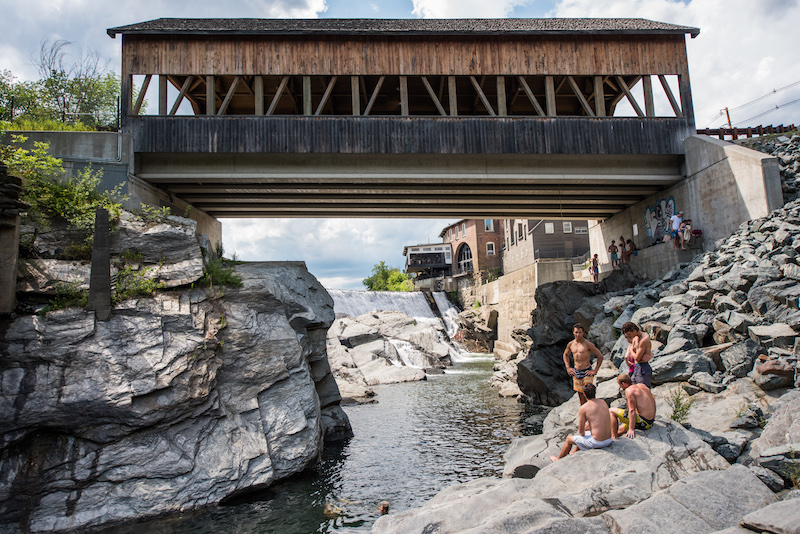
Red Bull pioneered a cliff diving competition in 2009 and even sponsors athletes. As the extreme sport grows in popularity, Vermont— with its deep mountain pools, granite cliffs and marble quarries—has become a hotbed for its development.
However, the risk involved is real. More than 25 swimmers have died over the years at Huntington Gorge, a popular swimming hole and cliff jumping spot in Richmond. The Bolton Potholes have similarly taken lives, and Doug Veliko of Stowe Mountain Rescue says that in the summer, swimming hole rescues account for about 20 percent of the calls his organization responds to.
Veliko says that’s partially because these holes and pools are dynamic and change with the weather and water levels. One day, a jump goes
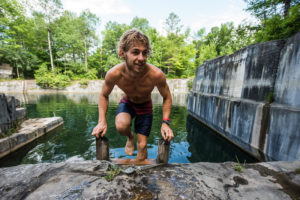
well and another it’s too shallow to stick the landing. “People get misled. They think ‘Oh I’ve been swimming here for 20 years,’ but things change,” Veliko says.
“The first thing to consider is safety, especially with the rivers of Vermont, which change vastly all the time,” says Dubois. “We have our kids get in the water with us before anyone jumps, to make sure that the hole we’re planning to jump into is safe.” After that? “We encourage them to work on tricks they are already comfortable with and reiterate that control is the key to safety.”
Labow recommends always jumping in shoes and considers a 40-foot drop potentially lethal. Veliko advises you watch for slippery wet rocks, scout pools and launch sites and don’t mix drugs and alcohol with cliff jumping.
Timeless Swimming Holes
You don’t have to be cliff jumping to enjoy Vermont’s swimming holes. David Hajdasz, author of Take the Plunge: An Explorers’ Guide to Swimming Holes of Vermont says, “I’ve swum in many states across the U.S. and there is just something special about the sacredness about Vermont swimming holes.”
As Hajdasz says, these are places where toddlers, grandparents, teenagers and adults all come to savor ephemeral north country summers. “Swimming holes are melting pots, places that inspire ownership and for the most part, people get along there even if they don’t elsewhere,” says Hajdasz. They’re also places that are open to anyone: there’s no fee, no dress code.
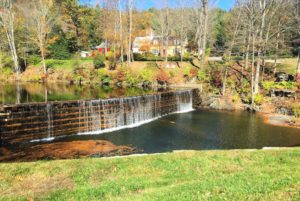
In his 20 years of exploring and documenting more than 40 swimming holes across the state, he’s seen a lot else change. “Everything in life changes. But swimming holes? They don’t change so much,” says Hajdasz, a retired chemist who now serves on the board of the Vermont River Conservancy. “It’s like time travel. You can go back to a place as a 50-year-old that you frequented at 15 and know it will be familiar,” says Hajdasz. “The stream, the rock you lounge on, the shape of the place are all familiar—it’s like stepping back in time.”
For our top cliff diving spots across the state, see “8 Epic Vermont Swimming Holes.”
Featured Photo Caption: University of Vermont Freeski Team member Zach Masi of Wolcott flips off of the 40-foot cliff at Bingham Falls in Stowe. Photo by Brooks Curran

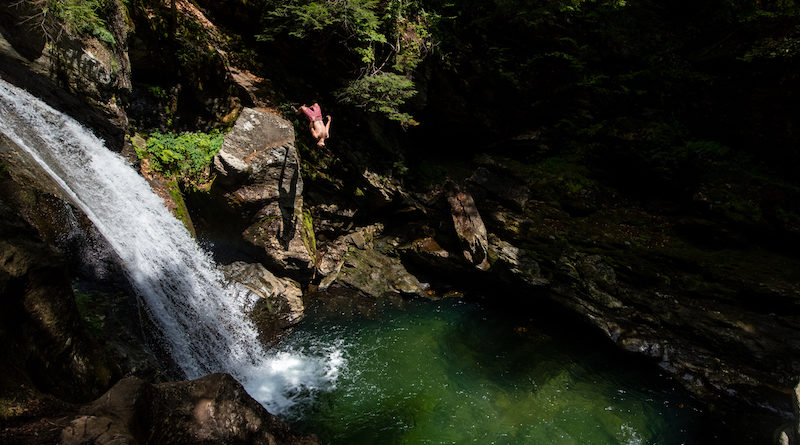
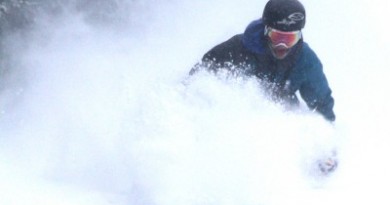
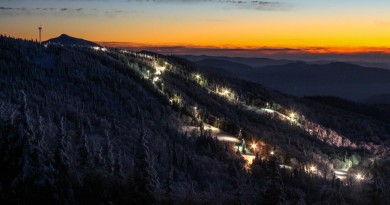
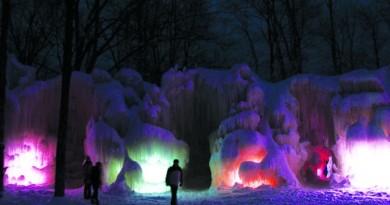
Pingback: 8 Epic Vermont Swimming Holes – VT SKI + RIDE
Pingback: Read the Summer Issue! – VT SKI + RIDE